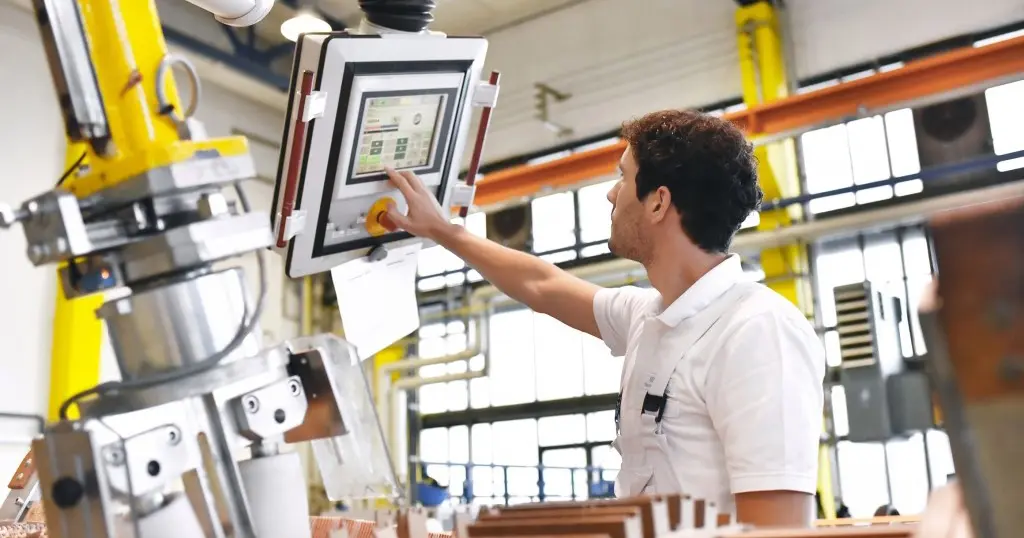When the first automobiles began to appear on our roads at the beginning of the 20th century, the question of safety played a very minor role. On the contrary, it was all about experiencing the new feeling of freedom and the fascination produced by the increasing distances that could be covered and improved performance. Thus began the conquest of the automobile, which rapidly became an indispensable status symbol for many generations.
To this day, a sporty design is often the focus of attention for many manufacturers, especially for premium vehicle manufacturers. Young, dynamic, expressive. All of these should be reflected in the design and stylistic elements. A flat-shaped structure and a low front. Unfortunately, what might initially sound sexy and positive does not stand up to closer examination in all areas.
When developing future vehicles, automotive designers – like fashion designers or architects – must anticipate long in advance what the world of tomorrow will look like, and what will then be perceived as modern and up-to-date. What is more, they must always bear in mind the changes and needs that future mobility will bring.
Conflict between design and safety
In our modern world, cars are becoming increasingly well equipped, and sometimes you could almost think you were in your living room at home. One thing, however, has become increasingly important since the early days of motoring: vehicle safety. Developers in this field are constantly working on innovations that will make our cars safer. Both inside and out.
Flat bonnets, for example, have an aesthetic effect. In the event of a collision, however, they can rapidly prove fatal to a pedestrian. On impact, the flat design causes him to be thrown onto the bonnet with great force.
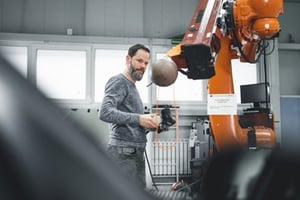 You don’t need to be a engineering expert to realise that this leads to conflicting aims between designers and safety experts. One calls for a flat, streamlined look while the other is battling for the safety of other road users. “I can remember exciting projects where designers, people responsible for the packages, operational stability experts and vehicle safety experts all came together around one table. We had to put in a great deal of awareness training to demonstrate and convince the others that it is quite realistic to aim for the best for everyone,” recalls Thomas Kerschbaum, vehicle safety and pedestrian protection team leader at EDAG Engineering GmbH.
You don’t need to be a engineering expert to realise that this leads to conflicting aims between designers and safety experts. One calls for a flat, streamlined look while the other is battling for the safety of other road users. “I can remember exciting projects where designers, people responsible for the packages, operational stability experts and vehicle safety experts all came together around one table. We had to put in a great deal of awareness training to demonstrate and convince the others that it is quite realistic to aim for the best for everyone,” recalls Thomas Kerschbaum, vehicle safety and pedestrian protection team leader at EDAG Engineering GmbH.
EDAG is consciously tackling this conflict, and working with major car brands to find smart solutions - and there is absolutely no reason whatsoever why attractive stylistic elements should play a secondary role here.
Not just a question of inner values - our standards exceed even the legal guidelines
Passenger safety is an important criterion when it comes to deciding which car to buy. But it is also important to protect other, more vulnerable road users, such as pedestrians or cyclists, from serious injury should they be involved in a collision with a vehicle. When developing vehicles, it is therefore necessary to take a large number of active and passive safety design parameters into account. In the event of a crash, for example, bumpers equipped with numerous sensors, can help to keep others safe. With the help of pressure sensors and acceleration sensors, for instance, a collision pattern can be created while an accident is actually happening.
The law also calls for safety measures that are to take effect in the event of a collision. However, we are not content to simply comply with these guidelines. We want to surpass them. Pedestrian protection is not something that takes place in a laboratory: it needs to prove its worth on the roads. It is therefore no wonder that we have another aim: "our aim is, with a clear conscience, to develop the best possible protection for other road users. In our eyes, this should be the aim of people developing security systems – just as it is for the designers of the stylistic elements of the future!" explains our expert, Thomas Kerschbaum. EDAG GmbH is therefore concerned not just with active safety, i.e. collision avoidance through the development of driver assistance systems, but also with validating the systems to ensure that they comply with legal requirements and NCAP protocols.
For us, pedestrians also have hips
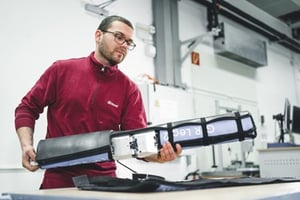 Impactors are used to simulate the impact of a pedestrian on a vehicle. These test bodies are used to assess vehicle safety and represent a person’s leg, thigh or hip. This makes it possible to simulate the typical sequence of events in a collision with a pedestrian.
Impactors are used to simulate the impact of a pedestrian on a vehicle. These test bodies are used to assess vehicle safety and represent a person’s leg, thigh or hip. This makes it possible to simulate the typical sequence of events in a collision with a pedestrian.
The relevant test body can therefore record the most frequent injuries and causes. In the past, leg and hip impactors were used separately. In order to obtain the most realistic results possible, especially for the hip, which can suffer serious injuries when a person is involved in an impact, leg and hip test bodies are now joined together to form a single impactor. This brings us closer to reality.
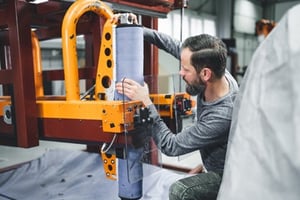 The problem with the old impactor was that often the forces - the thigh data - acting on the thigh were not correct because the complete human body was not represented. Now, the complete test body is dragged over the vehicle, which also allows thigh forces to be measured very well. EDAG Engineering already offers these tests on the corresponding test equipment.
The problem with the old impactor was that often the forces - the thigh data - acting on the thigh were not correct because the complete human body was not represented. Now, the complete test body is dragged over the vehicle, which also allows thigh forces to be measured very well. EDAG Engineering already offers these tests on the corresponding test equipment.
Active safety systems such as the advanced emergency braking system are now state of the art and, by law, required to be installed in every new vehicle, in some cases even in commercial vehicles such as trucks or buses. In addition to moderating the consequences of crashes, EDAG Engineering GmbH is also at the same time working on developing and validating various systems for active crash prevention.
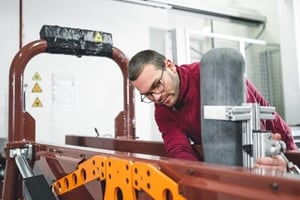 No matter what the pedestrian protection of tomorrow and beyond might look like: the experts at EDAG Engineering GmbH are committed to achieving the best for the vehicle, the driver and the entire environment, and therefore to going one technological step further. For example, we are currently working on advanced development topics to protect the weakest road users - pedestrians and cyclists.
No matter what the pedestrian protection of tomorrow and beyond might look like: the experts at EDAG Engineering GmbH are committed to achieving the best for the vehicle, the driver and the entire environment, and therefore to going one technological step further. For example, we are currently working on advanced development topics to protect the weakest road users - pedestrians and cyclists.
Pedestrian and cyclist protection remain exciting future topics for vehicle developers. If you are also looking for solutions for this safety-relevant topic, vehicle safety team leader Thomas Kerschbaum will be pleased to discuss these questions with you, and show you why, as we see it, pedestrian protection and function development must come from a single source.

